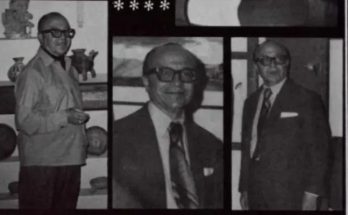By Luis Felipe Rodriguez Palacios
In part one of this story, we saw the beginning of Mexico’s 1926-1929 conflict between the church and the state that came to be known as the Cristero Rebellion or La Cristiada. The name “Cristero” represented those who rose up against the Mexican government with the cry of “long live Christ the King” and who were opposed to the restrictions that the government had imposed on Catholicism. One side denounced what were perceived as federal atrocities against the Catholic Church, and the other condemned what was viewed as a Holy War led by the bishops and “los ligueros,” i.e., those supporting the Liga Nacional Defensora de la Libertad Religiosa (National League for the Defense of Religious Liberty.) The resulting struggle marked the life and death of the Cristeros.
Jean Meyer, who wrote about the conflict, said: «First of all, let’s say that the Cristeros were not church people, nor were they Catholic politicians, nor were they lackeys of the bishops, nor were they instruments of the league.»
There is another work by Meyer on the subject that is a collection of handwritten documents which, he notes, have not been verified or published and whose intention was to leave a record for future generations. Most of these documents were written many years after the Cristiada. One, a letter from 1968, reads:
“On June 21, 1929, the aforementioned arrangements for the religious conflict were made, and the gentlemen who intervened in said arrangements should not have allowed us to hand over our weapons because those weapons cost us many lives, much blood. We risked our lives to remove those weapons, and it is neither possible nor fair that after so much suffering and work like the ones we went through, we are going to hand over our weapons, but to obtain priestly orders, we went to hand over our weapons and told our enemies, ‘Here are the weapons that we took from you on the battlefields since you could not take them from us. We came to bring them to you; they are no longer useful to us, but in the future, others will take them away from you, and then they will not give them again.’ And our enemies, thirsty for revenge, then began the war against the defenseless Cristero chief, and we were now free of the commitment we had against the government defending our religion. I went to Durango to look for my family, whom I had not seen for a long time. I did not struggle much to find them, and when I was with them, I came up with the idea to make them part of history. That is what writing these lines has been. Santiago Bayacora. Coah. 1968.”
Even though the weapons were withdrawn, the conflict continued for several years. It left many dead, and the conflict worsened during the second Cristero rebellion between 1934 and 1938. Here in San Miguel, there were many robberies and desecrations of goods in Atotonilco and in the Franciscan convent.
However, today’s story is about Sidronio Muñoz—a young man whom urban legend turned into a martyr of the time of the Cristiada. He was tortured by agents of the federal government to disclose the location of the Cristeros. It was said that the soles of his feet were cut, and he was made to walk along the Corral de Piedras, where the Santo Niño de Atocha is located. They made him walk, carrying a cross, beating him, until he finally he died in a puddle of water. He was left in a cave near Agua Espinosa, and three months later, some went up and found him there. They said he looked as if he had just been killed. They placed him in a wooden coffin and took him to the Parroquia, where he was put into a crypt.
His tombstone reads: “To the memory of young Sidronio Muñoz R. July 11, 1899-August 13, 1929. The sacred spoils of one who offered to God his youth, his life, his everything; this must be a song of unique softness that springs, not from the soul, but of love, which is fire, life. Oh, you who praise God even in your own dust, make us love you to martyrdom! R.I.P. A remembrance by his mother, sisters, and friends.”
Over time, the townspeople began to bring flowers and candles to him in great quantities. The priest Enrique Larrea was annoyed when he saw the devotion that Sidronio had caused among the people, who considered him a martyr, a saint. His tombstone was removed, and his remains were deposited elsewhere in the same church to prevent the devotion from continuing.




